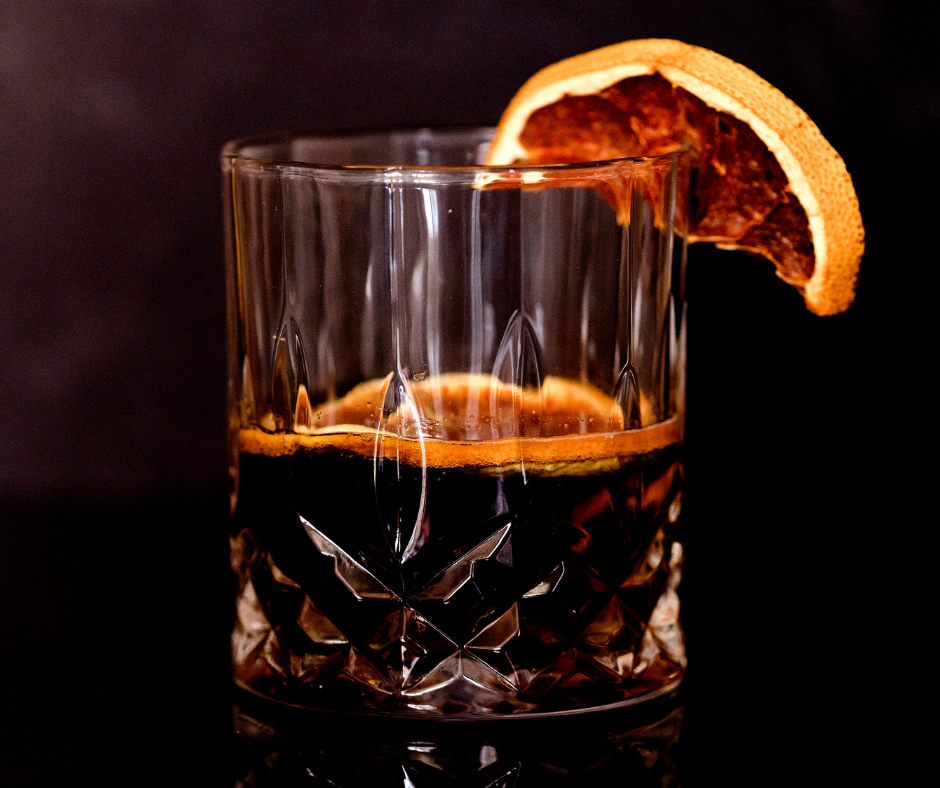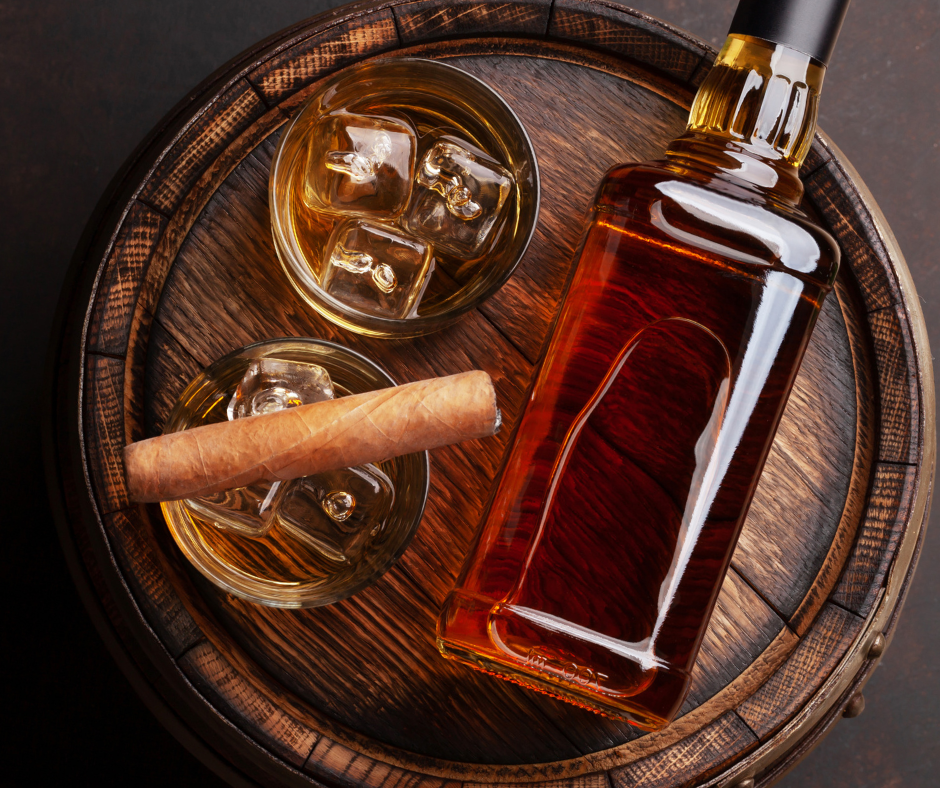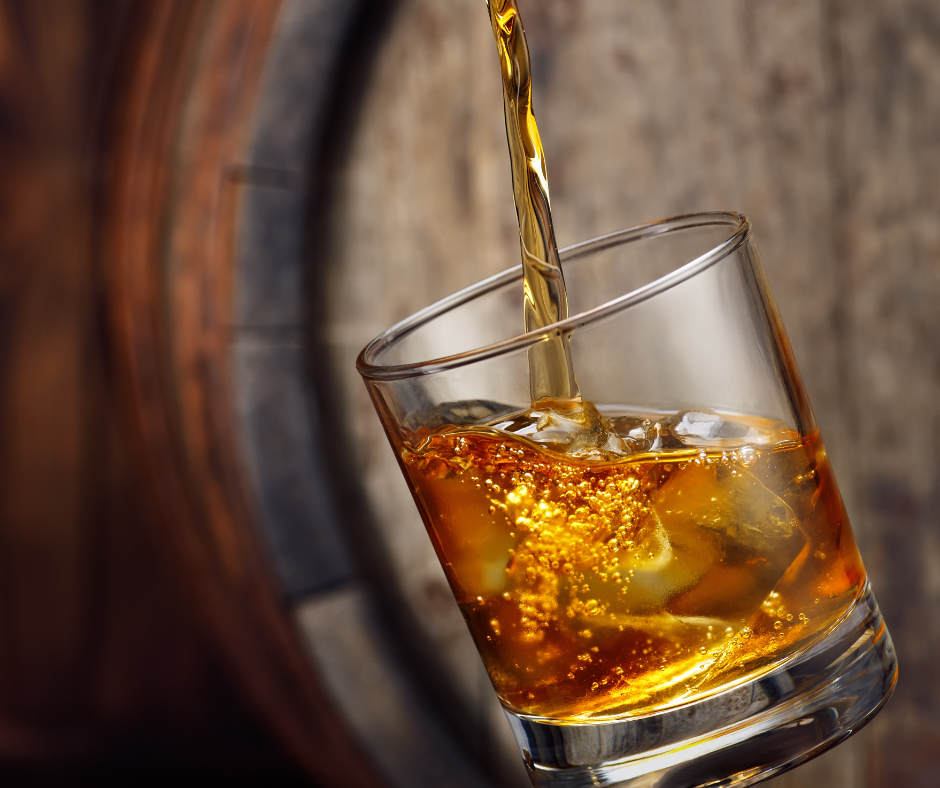Introduction
Whiskey-making Overview And History
Irish whiskey has a rich history that spans hundreds of years and is deeply intertwined with Ireland’s social and political fabric. World-renowned experts in Scotch whisky can shed light on the intricate details of whisky production, from the processing of raw materials to the quality testing and packaging of the final product. This blog will help you learn How to Make Whiskey.
The Science And Art Of Whiskey-making
The art of whisky-making combines both the science of chemistry and the taste for great flavor. The process usually involves three main steps:
- Firstly, a simple beer is made by fermenting a grain, water, and yeast mixture. This beer is relatively low in alcohol and would not be suitable for drinking.
- Next, the beer is distilled, boiling the liquid and capturing the steam produced. The steam is then cooled back into a liquid form, creating a clear, strong spirit full of intense flavors.
- Finally, the spirit is stored in oak casks, which allows it to mature and gain complexity and character. Over time, the spirit soaks up flavors from the wood, such as vanillin, tannin, and other compounds that give the final product its unique identity.
In conclusion, understanding the science and process of whiskey-making is essential to appreciating this much-loved beverage, and combining science and art in making whiskey results in a unique and complex flavor profile that continues to captivate people worldwide.

Preparing The Ingredients
Choosing Grains And Yeast
To make a delicious homemade whiskey, it is essential to choose the finest ingredients. The three main ingredients in whiskey production are water, barley (or other grains), and yeast. The type of grains used will significantly impact the final taste of the whiskey.
The distiller can choose from various grains, such as corn, rye, and wheat, to create their desired flavor profile. The selection of yeast, which will convert sugars in the grains to alcohol, should also be carefully considered.
Milling And Malting The Grains
Once the grains and yeast have been selected, it is time to mill and malt the grains. Milling involves crushing the grains into smaller pieces to expose the starches, while malting involves soaking the grains to prepare them for germination. During germination, enzymes are released, converting the starches into sugars that the yeast can ferment.
The malted grains are then dried and crushed, creating “malt” to be mixed with additional grains, such as corn or rye, to make a mash. The mash is then brewed and cooled before yeast is added, and the fermentation process begins. After fermentation, the liquid is distilled to increase the alcohol content and then aged in oak barrels.
In conclusion, preparing the ingredients is crucial in making high-quality homemade whiskey. Choosing the right grains and yeast, combined with milling and malting techniques, will significantly impact the final flavor of the whiskey.
Mashing And Fermentation
Mashing Process
To continue the whiskey-making process, the malt is mixed with hot water to create a mash. This process extracts the soluble sugars from the grains, creating a sugary liquid called wort. The remaining solid components of the mash are then removed from the wort, creating a sweet liquid that contains the necessary sugars for fermentation. The wort is then transferred to a fermentation vessel, cooled to a specific temperature, and yeast is added.
Fermentation Process
Fermentation is a vital step in the whiskey-making process, where yeast converts the sugars in the wort into alcohol. During the process, carbon dioxide is also released as a byproduct. The fermentation process can last anywhere from two to seven days, depending on the type of whiskey being made and the desired flavor profile. After fermentation, the liquid is called “wash” and has an alcohol content of around 5-10%.
Producing high-quality whiskey requires meticulous mashing and fermentation with several steps and ingredients. This process extracts the necessary sugars from the grains and converts them to alcohol, producing a distinct flavor profile for each whiskey made. The next step in the whiskey-making process is distillation, where the alcohol content is further increased.

Distillation Of The Beer
After fermentation, the liquid is called “wash,” with an alcohol content of around 5-10%. To increase the alcohol content to the desired level for whiskey, the wash is distilled. This process separates the alcohol from the water and other impurities, creating a more concentrated solution.
Pot Still Vs. Column Still
Two main types of stills are used in whiskey-making: pot and column. Pot stills are traditional and produce whiskey with a more unique flavor profile. They heat the wash and collect the alcohol that evaporates from it. The resulting liquid has a lower alcohol content, around 60-70% ABV (alcohol by volume). Column stills, on the other hand, are more modern and efficient, producing a high ABV liquid of around 92-96%. This method is commonly used for creating blended whiskey, vodka, and gin.
Distillation And Alcohol Concentration
The concentrated liquid is poured into stills heated with steam during the distillation process. The heat causes the liquid to evaporate and re-liquify, separating the alcohol from the water. As a mixture of water and alcohol is heated, more of the alcohol than the water will be released as vapor. Distillation is usually repeated twice, sometimes even three times, to control the alcohol concentration to the desired level.
Distillation is critical in determining the type and quality of whiskey produced. Pot and column stills produce different flavor profiles and alcohol concentrations, resulting in distinct types of whiskey. After distillation, the resulting liquid will be aged in oak casks for at least three years to produce single-malt whiskey. The science and art of whiskey-making are precise processes requiring careful attention to detail at each step.
Maturation And Aging
After fermentation, the liquid is called “wash,” with an alcohol content of around 5-10%. To increase the alcohol content to the desired level for whiskey, the wash is distilled. This process separates the alcohol from the water and other impurities, creating a more concentrated solution.
Storage In Oak Casks
One of the most important steps in maturing whiskey is the aging process, where the distilled liquid is stored in oak casks. For centuries, oak has been used for this purpose due to its unique porous nature. Oak casks can be toasted or charred to give the whiskey its distinct flavor and aroma. During aging, the interaction between the whiskey and the oak cask develops complex flavors and a smoother, more refined taste.
Effects Of Aging On Flavor
The aging process can significantly impact the flavor and aroma of whiskey. As the whiskey ages, it undergoes a series of chemical reactions facilitated by exposure to oxygen and the porous oak cask. The oak imparts flavors such as vanilla, caramel, and spices. The longer the whiskey is aged, the more complex and refined its flavor profile becomes. The interaction between the whiskey and the cask allows it to mellow over time, producing a smoother and more nuanced drink that can be enjoyed in moderation.
In conclusion, whiskey-making is an intricate process requiring attention to detail at each step, from fermentation to distillation, maturation, and aging. Using oak barrels and the aging process is crucial in creating the unique and nuanced flavor profiles we associate with whiskey. The art and science of whiskey-making continue to evolve, with distillers experimenting with new techniques and ingredients to produce innovative and exciting new spirits.

Whiskey Tasting
How To Taste Whiskey
Tasting whiskey is an art that requires patience, attention to detail, and an appreciative palate. It is about indulging, evaluating, and assessing the various flavors and aromas that make the drink unique. For whiskey enthusiasts looking to refine their craft, here are some tips for tasting like a pro:
- Sip, don’t shoot: Savor the drink one small sip at a time instead of downing it all at once.
- Use a spit bucket: Like wine tasting, whiskey tasting involves evaluating different brands and flavors. To avoid feeling intoxicated, consider using a spit bucket.
- Consider the glassware: A snifter or Glencairn glass with a small opening will allow you to capture the aromas better and experience the full flavor profile of the whiskey.
Notable Whiskey Flavor Profiles
Whiskey is a complex drink with diverse flavor profiles, styles, and alcohol levels, making it a favorite among drinkers worldwide. Some of the notable flavors and styles include:
- Bourbon whiskey: Made from at least 51% corn and aged in charred oak barrels, bourbon whiskey is known for its vanilla, caramel, and oak flavors.
- Rye whiskey: Made from at least 51% rye and aged in charred oak barrels, it is characterized by its spicy and fruity notes.
- Wheat whiskey: Made from at least 51% wheat and aged in charred oak barrels, it is known for its softer, smoother palate and hints of sweetness.
- Barley whiskey: Made from malted barley and aged in oak barrels, barley whiskey is a staple in Irish and Scottish whiskey production, with flavors ranging from sweet to smoky.
In conclusion, whiskey tasting offers a unique experience for enthusiasts exploring the drink’s various flavors, styles, and aromas. With the right glassware, techniques, and appreciation, whiskey can be a drink that brings people together and sparks a passion for the art and science of whiskey-making.
How to Make Whiskey: DIY Home Whiskey-making
Legal Considerations
Before embarking on a DIY whiskey-making project, it’s essential to consider the legal requirements. It is illegal to distill spirits for personal consumption in many countries, including the United States. However, it’s not illegal to own a whiskey-making kit or to use one to make your whiskey without distillation. To stay on the right side of the law, research the legal requirements in your jurisdiction before starting your DIY whiskey-making project.
Equipment And Setup
So, How to Make Whiskey? To get started, a DIY whiskey-making kit usually includes all the necessary ingredients, such as wood chips, fruit peels, and spices. The first step is choosing your base, a store-bought neutral grain spirit, or a homemade corn mash. Cook your base in a large pot, then cool it before transferring it into a fermentation vessel.
Once you have the fermented base, it’s time to add the botanicals that come with the kit. This is where you can get creative and infuse unique flavors, such as cinnamon, orange peels, and even coffee beans. Allow the mixture to rest for a few days, and then filter it using a cheesecloth or coffee filter.
After filtering, the whiskey is ready to be aged. You can use small oak barrels or mason jars to age your whiskey. Typically, the aging process can take between two weeks to several months, depending on personal preference and taste.
In conclusion, DIY home whiskey-making is an enjoyable and rewarding experience that allows enthusiasts to experiment with unique flavors and aroma profiles. It’s crucial to consider legal requirements and to invest in the right equipment before starting the process. A whiskey-making kit, patience, and a little bit of creativity are all you need to craft your very own personalized whiskey.
Conclusion
Recap Of The Whiskey-making Process
Now you should know How to Make Whiskey. Making whiskey involves creating a simple beer, distilling the beer, and storing and maturing the whiskey in oak casks. Craft distilling has changed how whiskey is produced and consumed, with the prevalence of make spirit being one of the most striking examples.
Appreciation For The Art And Craftsmanship Of Whiskey-making
Whiskey-making is both a science and an art, involving steps such as malting, mashing, fermentation, distillation, and maturation. With the movement of craft distilling, consumers have acquired a taste for unaged white whiskey for both mixing and straight consumption. The rise in micro distillers has also brought about subtle but important changes in how whiskey is produced and appreciated. Overall, the art and craftsmanship of whiskey-making should be appreciated and celebrated.
FAQ: How to Make Whiskey: Crafting Elixir: The Art of Whiskey Making Revealed
Q: Can Whiskey Be Made At Home Legally?
A: It is essential to check the legal requirements of your jurisdiction before starting a DIY whiskey-making project. In many countries, including the United States, distilling spirits for personal use is illegal. However, owning a whiskey-making kit and using it to create whiskey without distillation is typically allowed.
Q: What Equipment Do I Need To Make Whiskey At Home?
A: A DIY whiskey-making kit usually includes all the necessary ingredients, such as fruit peels, spices, and wood chips. You’ll also need a large pot to cook your base, a fermentation vessel, cheesecloth or coffee filter for filtering, and a container to age your whiskey, such as a small oak barrel or mason jar.
Q: What Type Of Base Can I Use For Homemade Whiskey?
A: You can use a store-bought neutral grain spirit or a homemade corn mash as a base for your whiskey. A cooked corn mash typically has a more authentic flavor, but a neutral grain spirit will provide a clean canvas for adding flavorings.
Q: How Long Does It Take To Make Whiskey At Home?
A: The duration of the whiskey-making process depends on personal preferences and tastes. The fermentation process can take anywhere from three days to two weeks, and the aging process can take weeks to several months.

Andre Lotz immigrated to the United States from South Africa almost 20 years ago. Still, he didn’t feel truly at home until he settled in Mobile—a city that reminds him of his childhood home of Fish Hoek on the southern cape of Africa.

